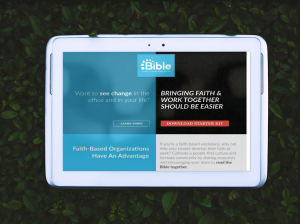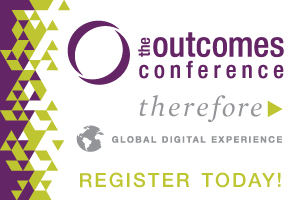
How to Keep Your Team Aligned While Working Remotely By Scott Wennermark

I
Make working remotely work for your team
You’re probably feeling thankful for technology and the ability to continue producing during this unprecedented time, but you might also be feeling some other emotions, too.
While remote working enables progress and might allow critical deadlines to be maintained, there’s undoubtedly a change in the quality of communication (and we’re not talking about your WiFi). There are proven techniques to engage team players and keep the doors of communication open.
Continue reading to discover the one thing remote teams have done for years to stay connected and maintain communication.
Working remotely introduces new dynamics and possible challenges to your team. New technology might be necessary, and new communication processes might be needed.
If your team didn’t already work remotely, chances are you’re finding ways to maintain momentum and continue production by utilizing some remote-friendly technology or project management tools.
Resources to Solve Tech Challenges
Cloud meetings and the software providers who run them, are serving teams, churches and families around the clock during the COVID-19 pandemic of 2020. Here are two we like:
- Zoom provides a remote conferencing service with a free option for limited meetings.
- The popular Skype application allows Skype users to communicate with one another for free.
Project management software is critical for keeping remote teams on the same page. The right software will enable a team to track assignments and meet deadlines while managing resources and cost. Functions of the tools can include task distribution, time tracking, email integration and many more. Three that we recommend include:
- Asana, which offers a free plan.
- Slack, which also offers a free, limited plan.
- Monday, which does offer a free trial but not a free plan.
These tools are invaluable for organization and productivity within your team, but what about the human aspect of teams?
A Resource to Solve Communication Challenges
A recent Gallup poll found that 21% of remote workers reported feeling lonely. This is no surprise considering remote employees are often working in empty homes or in coffee shops full of strangers.
To overcome this obstacle, which can present itself in a physical workplace, too, Gallup article writer Adam Hickman, Ph.D. suggests that managers shift their thinking and consider employee engagement as an organizing principle. He writes:
“Supporting the unique needs of remote workers may seem like a lot of work for a manager. It can be. Though the best managers are masters of individualization, staying on top of the psychological welfare and work environments of remote employees takes time and concern…It helps to use the elements of engagement as an organizing principle.”
Engaging these remote employees can come in the form of informal chats or phone trees, or involving staff at the ground level of projects. It can also come from another source, one that your team can circle around, that has a proven track record of bringing together people of different backgrounds and in different stages of life: reading the Bible together.
Did you know that groups all over the country are going back to the basics and are reading the Scriptures together?
A Resource To Engage
Individuals that are engaging with the Bible at least 4x a week report:
- Less depression
- Fewer negative or self-destructive thoughts
- Less bitterness
- More positivity
- A general feeling of encouragement
- A greater ability to forgive
According to the Center for Bible Engagement, reading the Bible, or Bible engagement, is the single most powerful predictor of spiritual growth, above any other Christian practice or discipline. For centuries, groups have experienced increased connection and relational growth when they study the Bible together. Why not use this known tactic to bring your team together during this unprecedented time?
If there’s ever a time when we need to come together as healthy teams, it is now.
How To Engage Your Team In Bible Reading
Engaging your team doesn’t have to be complicated! Follow these 3 steps:
1. Choose a time.
The key is to formally make room for your Bible engagement plan, whether it’s during formal work hours or at another specified time. As a leader, be sure to communicate your support for this optional endeavor. It’s important that you give permission so there’s no uncertainty of consequences or expectations regarding their involvement.
2. Choose a resource.
A variety of resources can be used to engage your team, like daily devotionals, prayer request sharing, or a group reading schedule.
On AtWork.Bible you can access done-for-you resources like reading schedules of different lengths, email blurbs to send to your staff, and even a free website template. You’ll also find social media cards to help you promote your engagement plan.
3. Communicate clearly.
Make this plan a no-brainer. When you choose a dedicated microsite for your reading plan, you set up your participants for success.
Using a devoted website ensures that your reading campaign details and updated information are easily accessed by everyone. In addition, maintaining a separate site allows you to dictate the design of the pages, rather than having to fit within the design constraints of your main page.
Claim a Microsite
An easy way to create a microsite is to utilize a secondary top-level domain (like .BIBLE) or a subdomain. Above all, make sure your site has an easy-to-remember name and is easily found via the main site. Here are some examples:
- Microsite Example: read.leaderswhoserve.com
- Secondary Domain Example: bible
A secondary domain for Bible reading plans can be found and purchased at www.registry.bible. These secondary domains are the best solution for sites with more than one page and internal links.
Using a devoted secondary top-level domain (like .BIBLE) or a subdomain ensures that your reading campaign details and updated information are easily accessed by everyone. In addition, maintaining a separate site allows you to dictate the design of the pages, rather than having to fit within the design constraints of your main page.
Your team—whether newly remote or veteran nomads—are adjusting to life in isolation. You are all going through more changes and adjustments than you even realize. Take this opportunity to lean on resources that will help you all universally.
Empower your team to read the Bible together—at work—and encourage social capital and community to flourish, even in desert time.
Go back to the basics and engage your team by bringing them together over the common ground of the Scriptures.
Find every resource you need to conduct a Bible engagement reading plan with your team at AtWork.Bible. Download the free schedules, social media cards, email statements, newsletter blurbs, website templates and more at AtWork.Bible.
####
 Scott Wennermark is the Director of Strategic Advancement for the American Bible Society. He is the founder of the .BIBLE top-level domain, which is helping to shape the future of the Internet by creating a new space for Bible-inspired content. He is also a driving force behind the Digital .BIBLE Project which aims to help 1.2 billion people gain access to scriptures in their own languages online.
Scott Wennermark is the Director of Strategic Advancement for the American Bible Society. He is the founder of the .BIBLE top-level domain, which is helping to shape the future of the Internet by creating a new space for Bible-inspired content. He is also a driving force behind the Digital .BIBLE Project which aims to help 1.2 billion people gain access to scriptures in their own languages online.

There is still time for you to join the ecosystem of community that is being established through the Outcomes Conference Digital Experience 2020. Don’t miss connecting with leaders who are ready to invest their God-given best into you!
www.OutcomesConference.org

What is Christian Leadership Alliance?
Christian Leadership Alliance equips and unites leaders to transform the world for Christ. We are the leaders of Christ-centered organizations who are dedicated to faithful stewardship for greater kingdom impact.
Sign up for FREE blog updates.
Upcoming Events
Check back later!


